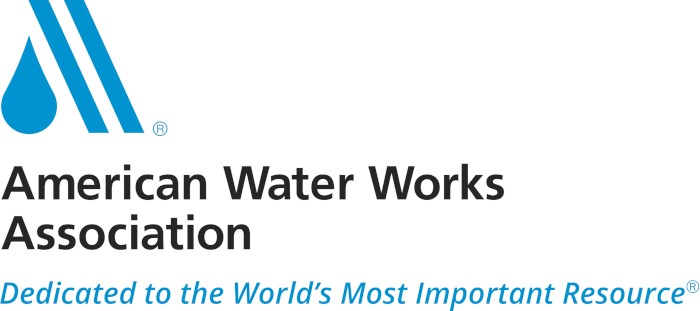The AI Interview: Patrick Kerr, President, American Water Works Association
Water industry professional discusses the new drinking water standard, cybersecurity and sustaining water resources
 American Infrastructure: Can you speak to the new PFAS drinking water standard and what it means for both professionals and public health?
American Infrastructure: Can you speak to the new PFAS drinking water standard and what it means for both professionals and public health?
Patrick Kerr: The American Water Works Association (AWWA) and the water utilities across the United States care deeply about protecting our communities. It’s our mission, and we take that responsibility seriously. AWWA supported the U.S. Environmental Protection Agency’s (EPA) decision to explore a national PFAS regulation. The Safe Drinking Water Act sets forth a process to ensure drinking water standards are grounded in sound science.
AWWA submitted extensive comments on the proposed PFAS rule, many of which were not addressed in the final rule. We estimate the cost of the rule to be upwards of $40 billion – nearly $4 billion annually – and that’s three times as much as EPA projects. That matters, because the dollars each community spends on addressing PFAS are not available to address other public health issues – replacing lead service lines, investing in cybersecurity, etc.
For households that struggle to meet essential needs and impacted communities, particularly small ones, there will be affordability challenges. We are here to help our members navigate those challenges. I also think it’s important that we do not lose sight of the importance of source water protection when we think of PFAS. We need policies that keep potentially harmful substances out of water in the first place, and EPA must hold polluters – not water utilities and the consumers who sustain them – accountable for contamination.
AI: As cybersecurity becomes increasingly important, what can be done to improve such security measures in the water sector?
PK: Cybersecurity in the water sector is a real concern. It’s imperative that we take the steps necessary to safeguard customer information and protect against potentially catastrophic disruptions. That’s why AWWA has been urging a collaborative approach to cybersecurity in the sector, similar to what happens in energy. We are so grateful that legislation to create a Water Risk and Resilience Organization (WRRO) was introduced in the U.S. House of Representatives on April 11 by Reps. Rick Crawford (R-AR) and John Duarte (R-CA). The WRRO takes advantage of the technical knowledge of utility leaders, cybersecurity experts and regulators to manage risks. It also includes federal oversight from the EPA. We hope Congress moves quickly on this because we continue to hear of cyber-attacks on utilities. It’s time to prioritize cybersecurity as a fundamental pillar of water system resilience and commit to proactive measures.
AI: What can be done to increase and sustain water availability for both potable and non-potable needs?
PK: Protecting water at its source is essential for ensuring long-term access to a safe and affordable water supply. AWWA’s 2024 State of the Water Industry report – which surveyed more than 2,400 water professionals – reinforces the critical importance of source water protection, which has emerged as the sector’s top challenge. This shift reflects the urgent need to safeguard our water resources in the face of climate change, drought and the threat of emerging contaminants like PFAS.
Collaboration beyond jurisdictional boundaries, prioritizing a watershed perspective, is crucial for the long-term protection of drinking water sources and responsible management.”
To ensure a reliable supply of water, we must also fundamentally rethink how we manage our resources. This means embracing a One Water approach – recognizing all water sources as valuable – is crucial. AWWA’s Water 2050 initiative highlights the need for diversified strategies, such as advanced treatment for reuse and capturing stormwater for non-potable purposes, to reduce stress on drinking water sources. We must invest in technology upgrades for climate resilience and advanced asset monitoring to improve efficiency and safeguard existing supplies. Collaboration beyond jurisdictional boundaries, prioritizing a watershed perspective, is crucial for the long-term protection of drinking water sources and responsible management.
AI: What can AWWA membership offer water professionals across the various water industry sectors?
PK: Those of us who are engaged with AWWA understand that being a member can really advance your career trajectory, regardless of which water discipline you focus on. AWWA brings you into a network of diverse experts who have faced the same water challenges you have. Whether you’re in operations, engineering or management, our members’ collective knowledge offers a wealth of resources and proven solutions. This community is where you become better at what you do. It’s about sharing hard-won knowledge, collaborating on short and long-term solutions, and staying current in a dynamic field. It’s also about making friends who you will know throughout your entire life.
AI: Can you tell us about ACE24 and what attendees can expect from the event?
PK: ACE24 is where water professionals connect to shape the future of water. This year’s ‘Transforming Our Water Future’ theme speaks to the need for innovation as we face our biggest challenges in the sector. Attendees can expect a robust educational program covering a wide range of tracks, including water treatment, distribution, source water protection, resource management and regulatory compliance. You’ll explore the latest technologies, network with experts from around the world and gain actionable insights to take back to your community.
Also, 2024 marks 50 years of the Safe Drinking Water Act (SDWA), and attendees will find that we are celebrating the accomplishments of water professionals throughout the event. I hope to see you there.
AI: What are some remaining water challenges we should be focusing on?
PK: Even with emerging challenges like PFAS, cybersecurity and source water protection, water infrastructure is still among the chief concerns of our members. AWWA strongly urges elected officials to fully support programs like the State Revolving Loan Funds and Water Infrastructure Finance and Innovation Act (WIFIA). These programs are vital for ensuring safe and reliable water, but their effectiveness is hampered by inadequate funding and the diversion of resources.
We advocate for consistent, robust funding that aligns with the true scale of investment needed for our nation’s water infrastructure. Furthermore, programs like the Low Income Household Water Assistance Program, which support access to safe water for low-income households, deserve to be made permanent. These policy changes will steer us toward a future with sustainable water access for all communities.



